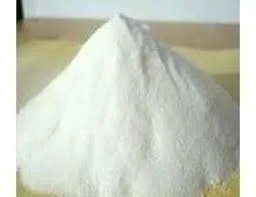
Dec . 02, 2024 00:50 Back to list
hydroxyalkyl cellulose
Hydroxyalkyl Cellulose A Versatile Polymer in Modern Chemistry
Hydroxyalkyl cellulose (HAC) is an essential compound in the realm of polymer chemistry, derived from cellulose, one of the most abundant natural polymers on the planet. Through a process known as etherification, cellulose is modified with hydroxyalkyl groups—typically ethylene or propylene oxide—resulting in a water-soluble derivative. The modifications impart unique physical and chemical properties to the cellulose, making hydroxyalkyl cellulose an invaluable ingredient across various industries, including pharmaceuticals, cosmetics, food, and construction.
Chemical Properties and Structure
The primary characteristic of hydroxyalkyl cellulose is its solubility in water, which allows it to function as a thickening agent, emulsifier, and stabilizer. The degree of substitution—how many hydroxyl alkyl groups replace the hydroxyl groups on the cellulose backbone—determines the solubility and viscosity of the polymer. Higher degrees of substitution enhance solubility in both hot and cold water, making HAC a versatile agent for many applications.
Moreover, HAC can be further categorized into specific types based on the hydroxyalkyl groups attached—such as hydroxyethyl cellulose (HEC) and hydroxypropyl cellulose (HPC). Each variant possesses distinctive characteristics that make them suitable for specific uses, including modifying the viscosity of solutions or enhancing the texture of emulsions in food products.
Applications in Pharmaceuticals
In the pharmaceutical industry, hydroxyalkyl cellulose plays a crucial role in drug formulation. Its ability to form gels and control the release of active pharmaceutical ingredients (APIs) makes HAC an ideal candidate for sustained-release formulations. Moreover, HEC and HPC are used as binders in tablet formulations, improving the mechanical strength and dissolution characteristics of pills. This property ensures that medications can be released into the body in a controlled manner, providing therapeutic benefits over extended periods.
Additionally, hydroxyalkyl cellulose serves as a protective coating for drugs, enhancing their stability and bioavailability. Its biocompatibility and non-toxic nature further bolster its fit for use in medical applications, including ocular preparations and topical drug delivery systems.
hydroxyalkyl cellulose

Role in Cosmetics
In the cosmetics industry, HAC is highly valued for its thickening and film-forming properties. It contributes to the texture and viscosity of lotions, creams, and gels, resulting in products that are easy to apply and spread. Moreover, its ability to retain moisture makes it a popular ingredient in moisturizing products, providing hydration and enhancing skin softness.
Another significant aspect of HAC in cosmetics is its effectiveness as a stabilizer for emulsions, which are mixtures of oil and water that require stabilizing agents to prevent separation. This property ensures that cosmetic products maintain their consistency and efficacy over time.
Contribution to Food Industry
Hydroxyalkyl cellulose is also prevalent in the food industry, where it functions as a thickener, stabilizer, and fat replacer. It is commonly found in sauces, dressings, and dairy products, enhancing their texture and mouthfeel. The ability of HAC to absorb water allows it to provide a creamy texture without adding significant calories, making it a valuable ingredient in low-fat and reduced-calorie food products.
Conclusion
Hydroxyalkyl cellulose is a remarkable derivative of cellulose with a wide array of applications spanning various industries. Its properties as a thickening agent, emulsifier, and stabilizer make it indispensable in pharmaceuticals, cosmetics, and food production. As research continues to unveil new formulations and applications, the significance of hydroxyalkyl cellulose is only expected to grow, solidifying its place as a vital component in modern chemistry.
-
Unlocking the Benefits of HPMC Products: A Gateway to Versatile Applications
NewsAug.07,2025
-
Unleashing the Potential of HPMC Ashland: A Comprehensive Look
NewsAug.07,2025
-
Tile Bonding Cellulose: The Key to Superior Adhesion and Durability
NewsAug.07,2025
-
Hydroxypropyl Methylcellulose Powder: The Versatile Component in Modern Pharmaceuticals
NewsAug.07,2025
-
Hydroxyethyl Cellulose: The Versatile Solution for Various Industries
NewsAug.07,2025
-
Hydroxyethyl Cellulose (HEC): The Versatile Polymer for Various Applications
NewsAug.07,2025







